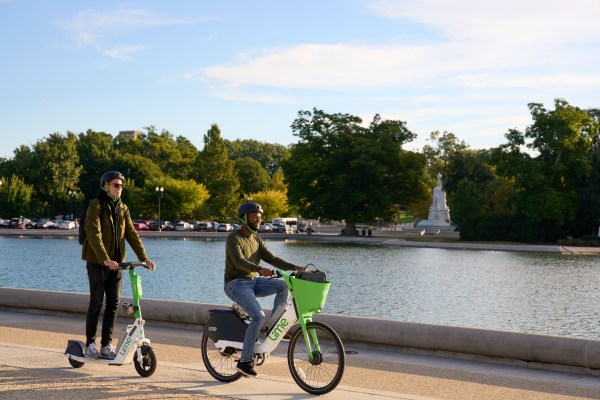Shared micromobility giant Lime said it has achieved full-year profitability on both an adjusted and unadjusted EBITDA basis, which would make it an outlier in an industry that has struggled to break even, much less turn a profit.
Lime reported adjusted EBITDA profitability of $15 million and unadjusted profitability of $4 million in 2022. The company said it adjusted for a one-time stock-based compensation expense, as well as “old depreciation that was embedded, which is less important than the future capex spend,” according to CEO Wayne Ting.
Lime did not share any other metrics like revenue or expenses, so TechCrunch was unable to confirm the company’s self-reported profits. The takeaway the company wants to impart, though, is clear: Lime has figured out how to make shared micromobility a sustainable business.
The company expects to achieve free cash flow positivity this year or next, and once the macroeconomic environment becomes more favorable, Lime will move to enter the public markets. When that happens, it’ll be because Lime wants to access the public markets, not because it needs to go public to raise money, said Ting.
A number of startups, including competitors Bird and Helbiz, have gone public over the past couple of years through mergers with special purpose acquisition companies. SPAC mergers sidestep the traditional IPO route and, as such, often have a hint of desperation about them — many startups choose the SPAC route because they’re struggling to raise funds privately.
“We were fortunate enough to raise over $500 million in 2021, so we came into 2022 with a very strong cash position,” said Ting. “Now we’re burning very little, and we have unlimited runway. We continue to invest in markets at a moment where a lot of our competitors are pulling back precisely because they can’t make money doing this.”
Over the past several months, almost every major micromobility company — including Bird, Spin, Tier, Helbiz, Voi and Superpedestrian — has laid off staff and exited unprofitable markets. Lime has somehow been able to avoid making similar headlines. In fact, Ting said 2022 was Lime’s best year. The company expanded into new markets, hit record gross bookings of $466 million and even hired 150 new full-time employees.
“2022 was a hard year for many people, but it’s actually good for the strong players,” said Ting. “This is a year where if you can’t make your business work, you’ve got to start shrinking because there’s not free money on the other side.”
Ting said that in the “good years” of the tech boom, businesses obscured their operational weaknesses by consistently calling on the VC lifeline to raise more money. In today’s tighter market, those inefficiencies are becoming glaringly obvious.
How Lime has (apparently) succeeded where others have failed
After Bird reported weak third-quarter 2022 earnings — including a going concern warning and a disclosure that it had overstated revenue for the past two years — the company decided to shift gears so it could achieve profitability. Bird’s strategy was simple: Stop building its own vehicles and instead buy off-the-shelf; raise more money to stay in operation; pull out of unprofitable markets; and downsize to stay lean.
Lime’s strategy has been, in many ways, the exact opposite.
The company has invested heavily into building its own vehicles with swappable batteries, and Ting said getting the design right has drastically reduced Lime’s capital expenditures.
“As we launch our new Gen4 scooters and e-bikes, they now last more than five years, they break very rarely and they use very few spare parts,” said Ting.
Ting said that Lime has also been able to gain market share with higher vehicle utilization than its competitors, in large part because the Gen4 vehicles are more desirable. TechCrunch was unable to confirm that riders would rather use Lime’s vehicles than other competitors, but Ting said Lime completed 120 million trips last year, and that gross bookings increased 20% year-over-year every quarter in 2022.
“Another reason we’ve reached this milestone is the fact that we’re global,” said Ting. “You need scale, and when you have scale, you can invest more in operations. You can invest more in hardware. When you go into a new city, we’ve either been in that city before or been in a city that kind of looks like that, so we get up on the operational curve much faster than competitors. We can get unit economics positive much faster.”
Of course, without eyes on an SEC filing, we just have to take Lime’s word for it that the unit economics are so healthy.
“It would be enormously imprudent for us not to be always telling the truth,” replied Ting when I questioned why Lime wasn’t ready to share more information on its financials, adding that Lime is audited on an annual basis by KPMG and counts Google, Uber and Bain Capital as investors.
“We’re getting ourselves ready [for the public markets] by improving our business, by showing that we don’t grow at the expense of losing money, but we grow in a sustainable, profitable way,” said Ting. “That’s why this year is so important. We’re going to do everything we can to grow the business, improve margins, so that whenever the IPO market comes back, we’re ready to take advantage of it.”
